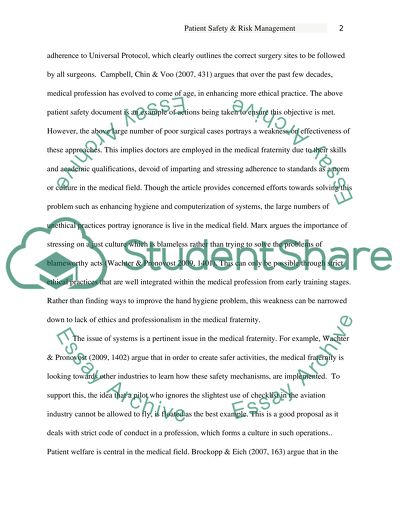Cite this document
(“Patient Safety & Risk Management Coursework Example | Topics and Well Written Essays - 1250 words”, n.d.)
Patient Safety & Risk Management Coursework Example | Topics and Well Written Essays - 1250 words. Retrieved from https://studentshare.org/nursing/1445216-patient-safety-risk-management-critique-of-journal
Patient Safety & Risk Management Coursework Example | Topics and Well Written Essays - 1250 words. Retrieved from https://studentshare.org/nursing/1445216-patient-safety-risk-management-critique-of-journal
(Patient Safety & Risk Management Coursework Example | Topics and Well Written Essays - 1250 Words)
Patient Safety & Risk Management Coursework Example | Topics and Well Written Essays - 1250 Words. https://studentshare.org/nursing/1445216-patient-safety-risk-management-critique-of-journal.
Patient Safety & Risk Management Coursework Example | Topics and Well Written Essays - 1250 Words. https://studentshare.org/nursing/1445216-patient-safety-risk-management-critique-of-journal.
“Patient Safety & Risk Management Coursework Example | Topics and Well Written Essays - 1250 Words”, n.d. https://studentshare.org/nursing/1445216-patient-safety-risk-management-critique-of-journal.


